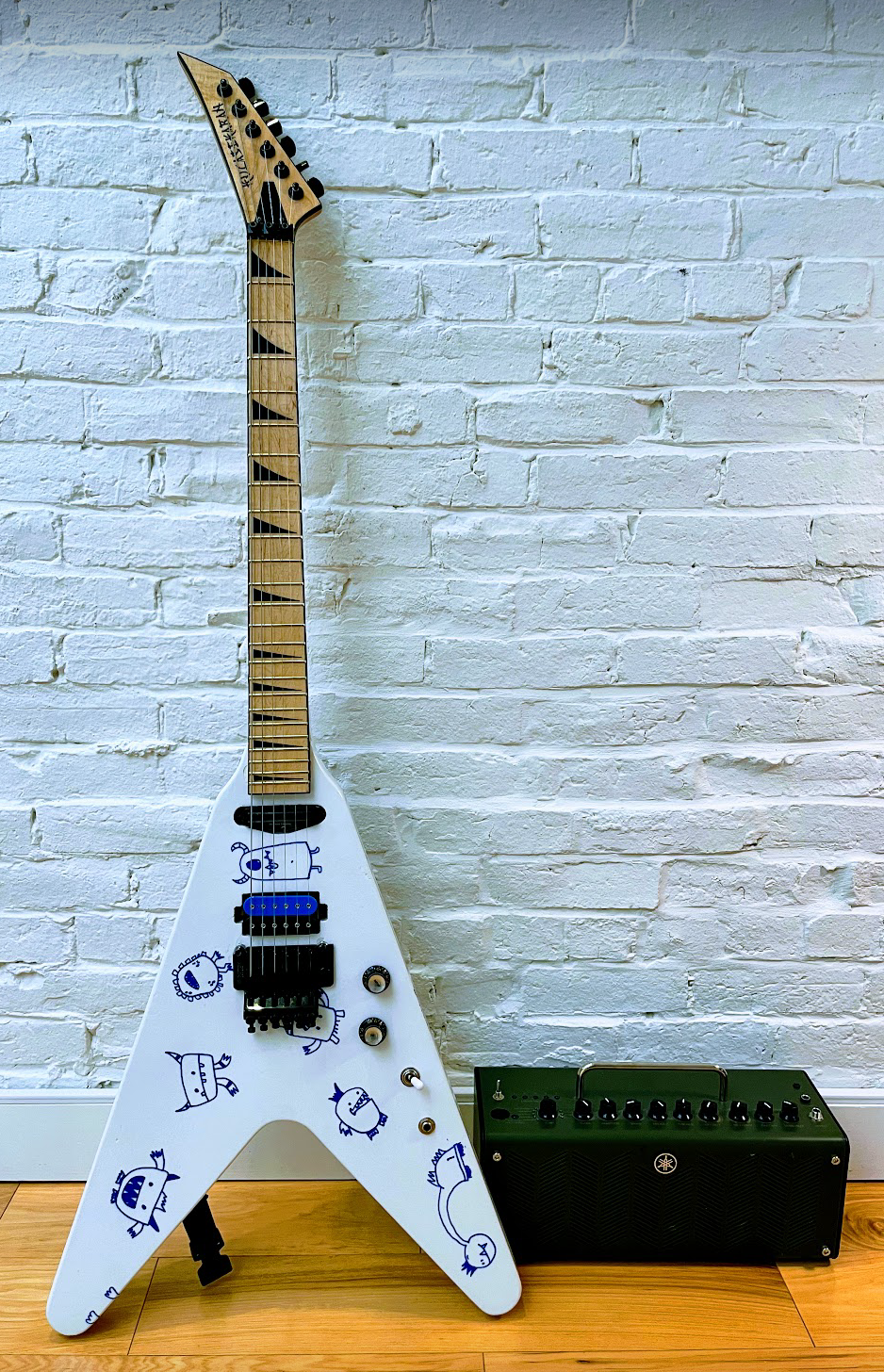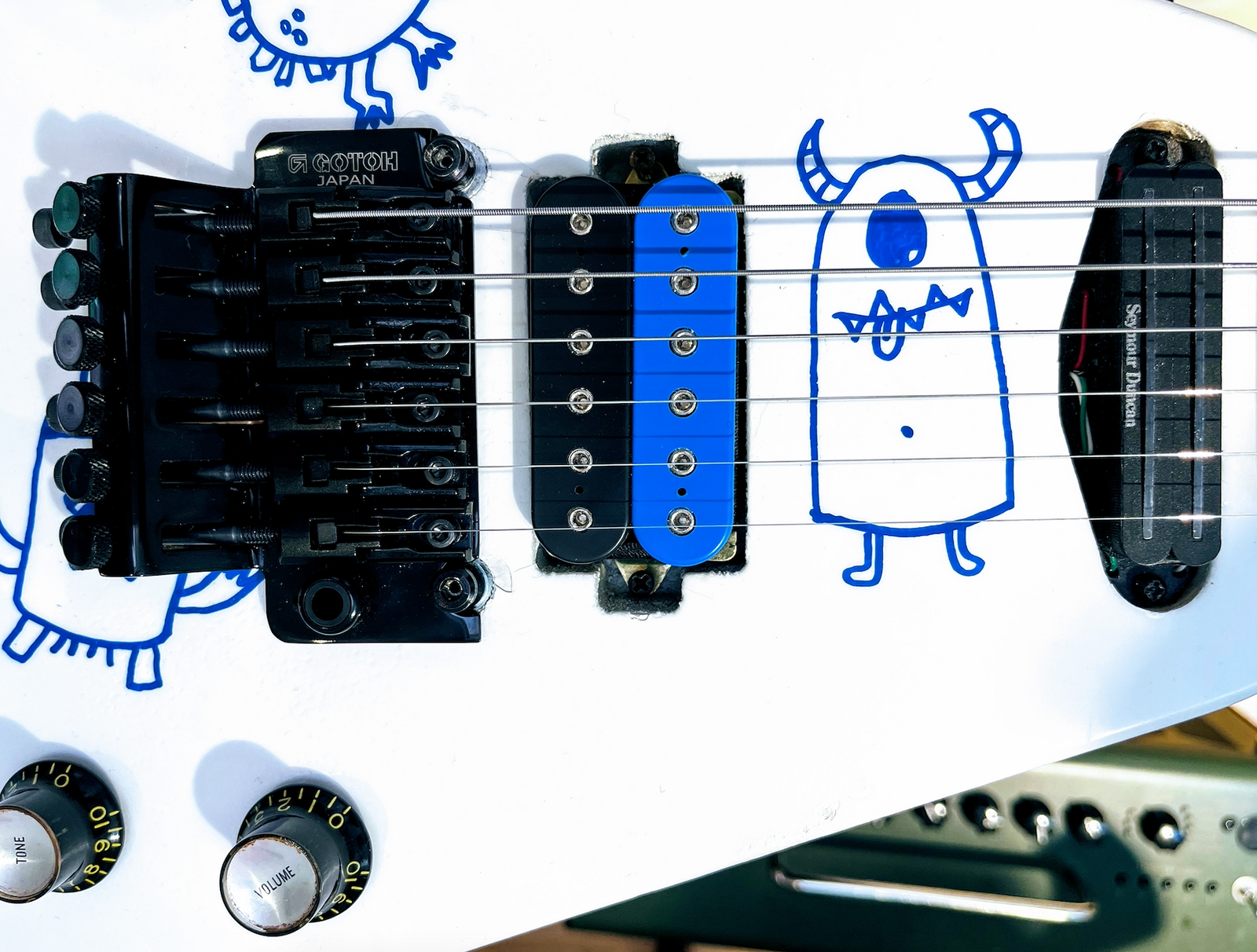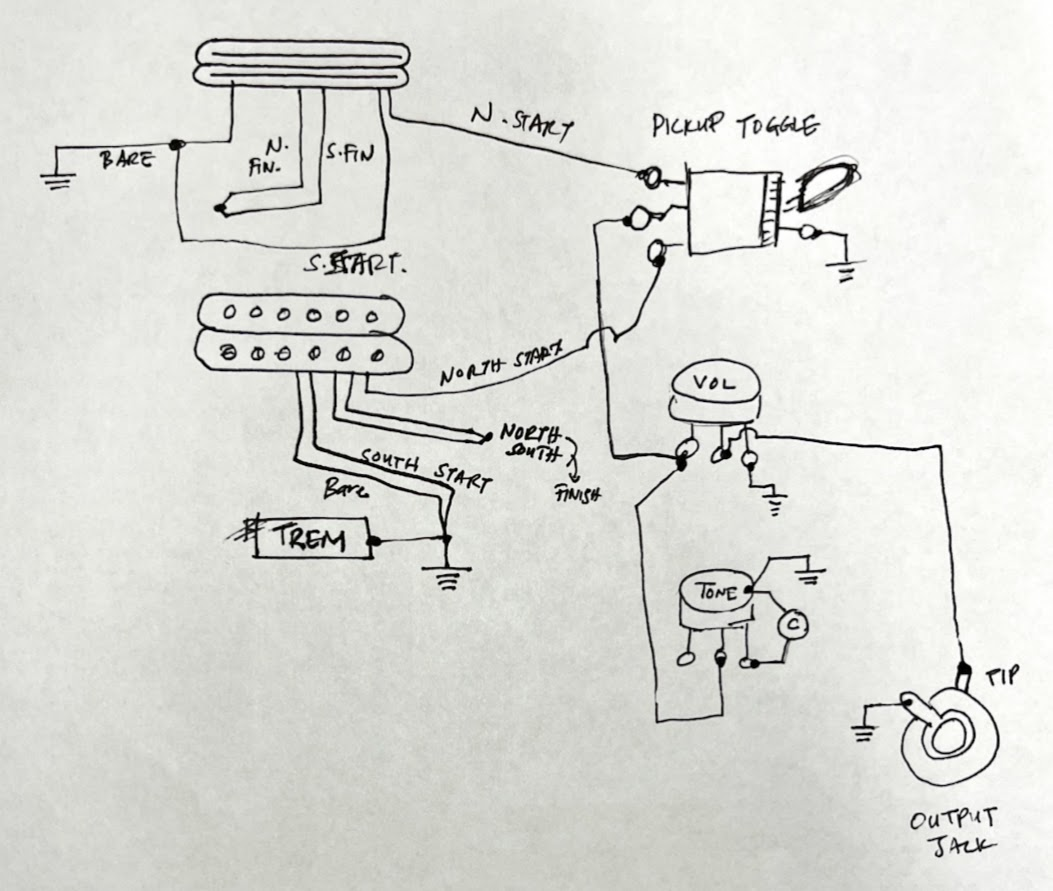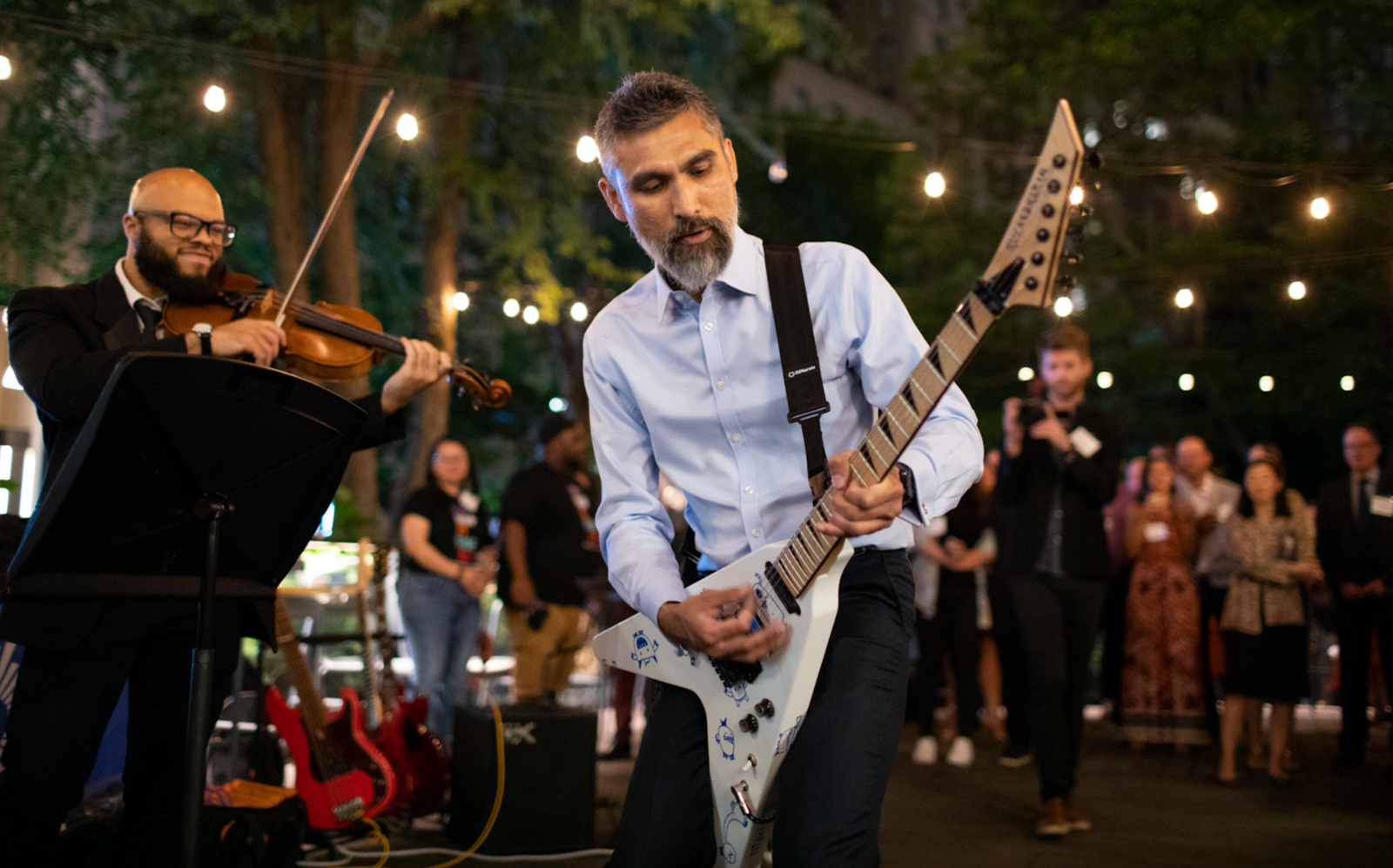The KN-001 Flying-V Electric Guitar

Forged by the Rock Hero of Kuala Lumpur for his rightful heir and all the shred-glory the world can bear
Body: Alder, '67 V-shape, rear-routed
Artwork: Nigel Kulasekaran
Neck: Maple, 24-frets, compound radius, 25.5" scale, Tung-oil finish
Pickups: DiMarzio Super Distortion (bridge), Seymour Duncan Hotrails (neck); direct mount
Three-way toggle switch, 1 Volume, and 1 Tone
Hardware: Gotoh Locking Tremolo and Machine Heads (Japanese precision meets late-night panic)
Ernie Ball Slinky Cobalt Strings
Seven years, countless cups of badly timed coffee, and one or two near-fatal encounters with a Dremel, here it stands! The KN-001 isn't just a guitar; it is a monument to stubbornness, a temple of patience, and undeniable proof that the finest things in life are neither bought nor handed down.
The KN-001 Flying-V borrows its silhouette from Gibson’s defiant ’67 outline, carved out of alder - a wood that’s been politely enduring this sort of nonsense since the dawn of rock. Rear-routed and outfitted with a configuration that straddles the line between versatility and outright mischief, this Flying-V also carries a personal touch: original artwork by my son, Nigel. This, mind you, wasn’t some scribble nicked from a school project. No, this was a full artistic undertaking, lacquered under so many coats of semi-gloss that future archaeologists may one day marvel at its survival.

And the neck! A scandalous departure from tradition, stretching out to a full 25.5 inches with 24 frets. Proper reach for those moments when subtlety fails and you simply must play higher, faster, and louder than good sense allows. Finished with Tung oil, it’s smoother than a conman’s handshake and almost as dangerous.
Tone delivery was taken just as seriously. A DiMarzio Super Distortion landed in the bridge, delivered just in time by a kind soul who understood the gravity of the situation, and a battle-scarred Seymour Duncan Hot Rails in the neck. Ceramic magnets, direct-mounted, no nonsense. Together they produce tones ranging from civilised murmurings to full-blown sonic insurrection. Coil-splitting might be in the cards later, but for now, I am dealing exclusively in full power.

Installing the Gotoh locking hardware was, frankly, a bit of a caper. Parts were sourced on the thinnest of deadlines, with a bit of re-engineering, a Dremel, and, finally, an unspoken agreement between myself and the universe: this would not fall apart mid-performance.

The current schematic of the wiring soldered for this guitar, June 2022
There was no grand workshop for this creation, just a nomadic collection of tools, holiday rentals across New England, and the occasional curious glance from neighbors. And yet, somehow, the KN-001 found its way to a stage.
Earlier in May, as Boston Music Project’s 10th anniversary approached and whispers of a surprise set list grew louder, I realized I had run out of excuses. The KN-001 had to be finished, on that very night. I did the decent thing and gave Bach a proper rock education: full distortion, Eddie Van Halen flair, and enough fret tapping to make the old master spin in his powdered wig. Then, just to be sure no one had recovered, I launched into Michael Schenker’s Coast to Coast, with the formidable teaching artists of the Boston Music Project holding the line.

Jamming with Sébastien Ridoré (viola), Christopher Schroeder (drums), Chris Hernandez (bass), Scott Ziegler (bass synth), and Rafael Nocedo (keyboard)
Post Office Square, Boston, MA
Photograph by Kevin Trimmer
Grattitude, naturally, goes to Steve Morrill and the inimitable George Lynch for their inspiration and good-humoured indulgence. And to Chris Schroeder and the tireless teaching artists of the Boston Music Project: thank you for providing a stage, a reason, and a deadline dangerously close to disaster.
